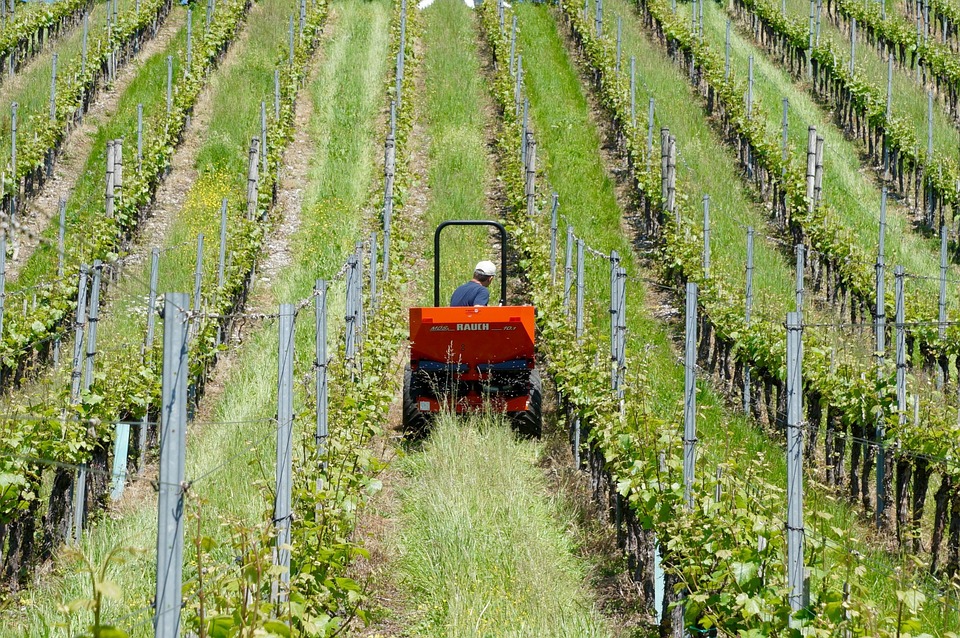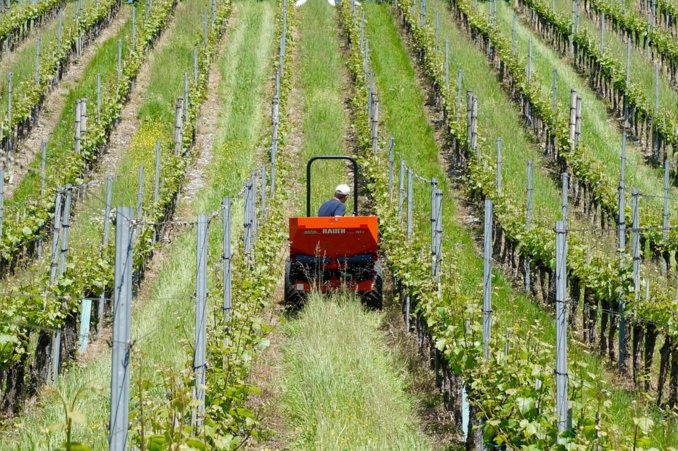Dairy
Dairy production is the most problematic agricultural sector of Europe. The industry has become subsidized since in mid-July 2016 the union’s government decided to support dairy manufacturers with grants totaling € 500 million.
Until April 2015, the milk and dairy products industry in Europe operated within a system of production quotas, introduced in 1984 in order to balance supply and demand in the dairy market against the background of overproduction of dairy products. When the restrictions were abolished, European farmers faced a production ramp-up and consecutive drop in prices.
According to the USDA’s forecast, milk production in the EU increased by 1.2% to 152 million tons in 2016. In 2017, overproduction of dairy products will continue to worsen - the USDA estimated that it will increase by 0.3% to 152.5 million tons.
January 23 in Brussels, milkmen held a rally near building of the Council of the European Union and sprayed tons of dry milk. They demanded higher procurement cost for a liter of milk, which is now kept at 30 cents. According to farmers, the optimal price is 37-40 cents per liter.
Milk producers in the European Union are also angered with emergence of half a million tons of dehydrated powder, which was produced at a time when price of milk fell to the lowest level.
The European dairy sector is dominated by small and medium enterprises (more than 80% of the total number of dairy producers in most of the countries - members of the EU). It employs more than 300 thousand people, says The Independent.
Fruits and vegetables
Despite existence of own production of fruits and vegetables, the European Union is increasing import of these products from third countries. According to Eurostat, volume of imports of vegetables in the EU from third countries in January - September 2016 grew by 12% yoy to € 9.7 billion and reached € 1.94 billion. Fruit imports for the same period increased by 9%. The largest countries - suppliers of fruit and vegetables in the EU are Morocco, Egypt, Israel and Turkey.
Spanish Farmers Union said that "the worst predictions came true." Large volumes of import harm the EU's internal market, the farmers believe. Now, they insist on introduction of import duties on fruit and vegetables.
At the same time, it’s not easy for European fruit and vegetables to access markets of third countries. This fact is reflected on volume of exports, For example, exports of apples in January - September 2016 fell by 11% to 1.1 million tons.
Grain
The EU grain sector is going through hard times. Bad weather in France, which is the largest wheat producer in the EU, dropped the yield to its lowest level in the last 23 years. FranceAgriMer estimated that gross harvest of wheat in France fell by 32%, to 28 million tons, in this agricultural season.
As a result, volume of French wheat exports to countries outside the EU from July to November 2016 fell by 33% year on year, to 4.1 million tons. At the end of the season, which ends in June, wheat exports outside France could be reduced by 45%, projected FranceAgriMer.
In January 2017 Invivo Trading, the largest grain trader in France, announced layoff of almost a third of employees, writes Les Echos.
For the first time in a long time France give the pas to Germany in terms of wheat exports. A number of foreign countries - importers of wheat, which is traditionally considered the French market, last year turned to other exporters. So, Russia has begun to increase deliveries to North African countries such as Morocco and Algeria thus entering in competition with France.
Sugar
Sugar production now looks like the most successful agricultural industry in the EU. EU authorities are planning to deregulate this segment in the near future. However, unlike the milk, sugar in the EU has not faced overproduction.
The EU produces about 10% of global volume of sugar, staying in the third place after Brazil and India.
Liberalization of the sugar industry in the European Union against the backdrop of rising prices for sugar on the world market will enable local farmers to increase production by 10-20% in 2017-2018.
Now, the EU is ready to become a net exporter of sugar and sell about 2 million tons on the world market (with a total production of 16.6 million tons in the union), estimates analyst Robin Shaw for The Financial Times.
However, it’s not all that simple with sugar export. Kingsman analytical says that breakeven point for the European sugar is 40 cents per kilogram. Sugar is trading at 45 cents per kilogram (+ 30% over last year) on the New York Mercantile Exchange, yet, if the price falls below 40 cents, "that Europe will not be competitive," note the agency analysts.
source: ft.com, independent.co.uk, lesechos.fr
Dairy production is the most problematic agricultural sector of Europe. The industry has become subsidized since in mid-July 2016 the union’s government decided to support dairy manufacturers with grants totaling € 500 million.
Until April 2015, the milk and dairy products industry in Europe operated within a system of production quotas, introduced in 1984 in order to balance supply and demand in the dairy market against the background of overproduction of dairy products. When the restrictions were abolished, European farmers faced a production ramp-up and consecutive drop in prices.
According to the USDA’s forecast, milk production in the EU increased by 1.2% to 152 million tons in 2016. In 2017, overproduction of dairy products will continue to worsen - the USDA estimated that it will increase by 0.3% to 152.5 million tons.
January 23 in Brussels, milkmen held a rally near building of the Council of the European Union and sprayed tons of dry milk. They demanded higher procurement cost for a liter of milk, which is now kept at 30 cents. According to farmers, the optimal price is 37-40 cents per liter.
Milk producers in the European Union are also angered with emergence of half a million tons of dehydrated powder, which was produced at a time when price of milk fell to the lowest level.
The European dairy sector is dominated by small and medium enterprises (more than 80% of the total number of dairy producers in most of the countries - members of the EU). It employs more than 300 thousand people, says The Independent.
Fruits and vegetables
Despite existence of own production of fruits and vegetables, the European Union is increasing import of these products from third countries. According to Eurostat, volume of imports of vegetables in the EU from third countries in January - September 2016 grew by 12% yoy to € 9.7 billion and reached € 1.94 billion. Fruit imports for the same period increased by 9%. The largest countries - suppliers of fruit and vegetables in the EU are Morocco, Egypt, Israel and Turkey.
Spanish Farmers Union said that "the worst predictions came true." Large volumes of import harm the EU's internal market, the farmers believe. Now, they insist on introduction of import duties on fruit and vegetables.
At the same time, it’s not easy for European fruit and vegetables to access markets of third countries. This fact is reflected on volume of exports, For example, exports of apples in January - September 2016 fell by 11% to 1.1 million tons.
Grain
The EU grain sector is going through hard times. Bad weather in France, which is the largest wheat producer in the EU, dropped the yield to its lowest level in the last 23 years. FranceAgriMer estimated that gross harvest of wheat in France fell by 32%, to 28 million tons, in this agricultural season.
As a result, volume of French wheat exports to countries outside the EU from July to November 2016 fell by 33% year on year, to 4.1 million tons. At the end of the season, which ends in June, wheat exports outside France could be reduced by 45%, projected FranceAgriMer.
In January 2017 Invivo Trading, the largest grain trader in France, announced layoff of almost a third of employees, writes Les Echos.
For the first time in a long time France give the pas to Germany in terms of wheat exports. A number of foreign countries - importers of wheat, which is traditionally considered the French market, last year turned to other exporters. So, Russia has begun to increase deliveries to North African countries such as Morocco and Algeria thus entering in competition with France.
Sugar
Sugar production now looks like the most successful agricultural industry in the EU. EU authorities are planning to deregulate this segment in the near future. However, unlike the milk, sugar in the EU has not faced overproduction.
The EU produces about 10% of global volume of sugar, staying in the third place after Brazil and India.
Liberalization of the sugar industry in the European Union against the backdrop of rising prices for sugar on the world market will enable local farmers to increase production by 10-20% in 2017-2018.
Now, the EU is ready to become a net exporter of sugar and sell about 2 million tons on the world market (with a total production of 16.6 million tons in the union), estimates analyst Robin Shaw for The Financial Times.
However, it’s not all that simple with sugar export. Kingsman analytical says that breakeven point for the European sugar is 40 cents per kilogram. Sugar is trading at 45 cents per kilogram (+ 30% over last year) on the New York Mercantile Exchange, yet, if the price falls below 40 cents, "that Europe will not be competitive," note the agency analysts.
source: ft.com, independent.co.uk, lesechos.fr



















